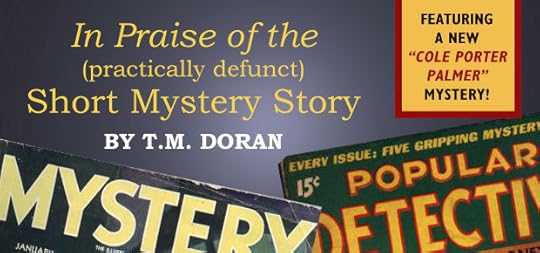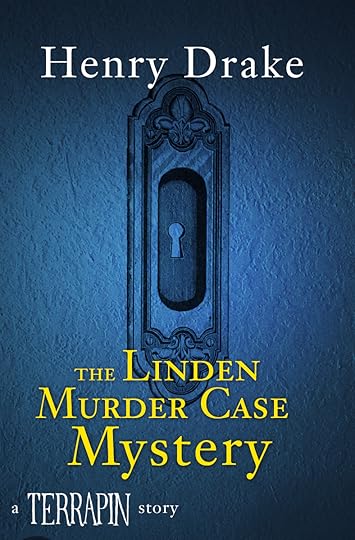In Praise of the (practically defunct) Short Mystery Story

In Praise of the (practically defunct) Short Mystery Story | T. M. Doran | IPNovels.com
Ever since Terrapin was published and a Cole Porter Palmer short mystery story was included as an appendix (“The Deadly Dart Mystery”), Ignatius has been offering an annual CPP mystery story. In 2012: “A Legendary Mystery”. In 2013: “The Yellow Tavern Mystery”. And in 2014: “The Linden Murder Case Mystery”. Ignatius Press’ John Herreid critiques the drafts, creates the art, and produces the story.
 My new short mystery story: “The Linden Murder Case Mystery”, a locked room mystery that takes place in Ann Arbor, Michigan, is connected to the 1930s S.S. Van Dine mystery stories, and to a publisher’s note in a first edition of one of his novels. Authors don’t use the words “Mystery” and “Case” in the same title; it’s one or the other. You’ll have to read the story to learn why both appear in this title.
My new short mystery story: “The Linden Murder Case Mystery”, a locked room mystery that takes place in Ann Arbor, Michigan, is connected to the 1930s S.S. Van Dine mystery stories, and to a publisher’s note in a first edition of one of his novels. Authors don’t use the words “Mystery” and “Case” in the same title; it’s one or the other. You’ll have to read the story to learn why both appear in this title.
This annual event prompts me to offer these thoughts on the short mystery story. In the second half of the 19th century and the first half on the 20th century, the short mystery story—typically taut, tense, terse—was a staple of fiction, and not just detective fiction. Thousands upon thousands were devoted fans. In 1944, the literary critic, Edmund Wilson, who loathed mystery stories, grudgingly admitted that the genre was wildly popular: “I have recently been sampling the various types of popular merchandise. I have decided that I ought to take a look at some specimens of this kind of fiction, which has grown so tremendously popular and which is now being produced on such a scale that the book departments of magazines have had to employ special editors to cope with it.”
Arthur Conan Doyle was the most famous practitioner, with G.K. Chesterton not far behind in his day. Other mystery writers who produced sparkling short mystery stories include Agatha Christie, Dorothy L. Sayers, John Dickson Carr, Rex Stout, and Ellery Queen (Frederic Dannay and Manfred Lee). Though the puzzle was an important ingredient, vivid investigators like Sherlock Holmes, Fr. Brown, Hercule Poirot, Lord Peter Wimsey, Nero Wolfe, and Ellery Queen populated, enlivened, and often edified these short stories.
Short mystery stories are usually cerebral puzzles, with characters less well defined, except for the detective, who is usually characterized in the author’s novels. Some of these stories are memorable as well as enjoyable reads: G.K. Chesterton’s “The Invisible Man”, Ellery Queen’s “The Adventure of The Mad Tea Party”, and Agatha Christie’s “The Coming of Mr. Quin” and “Harlequin’s Lane”, these latter stories from a lesser known series of—I guess you could call them—metaphysical mysteries.
While not a few of these short stories are cartoonish, readers don’t expect high literature from this sub-genre but entertainment of the sort we experience in assembling a challenging puzzle, or working out a riddle, or viewing a spectacular magic trick, or delineating a moral truth that turns conventional thinking upside down (a specialty of Chesterton’s).
Carl E. Olson's Blog
- Carl E. Olson's profile
- 20 followers



